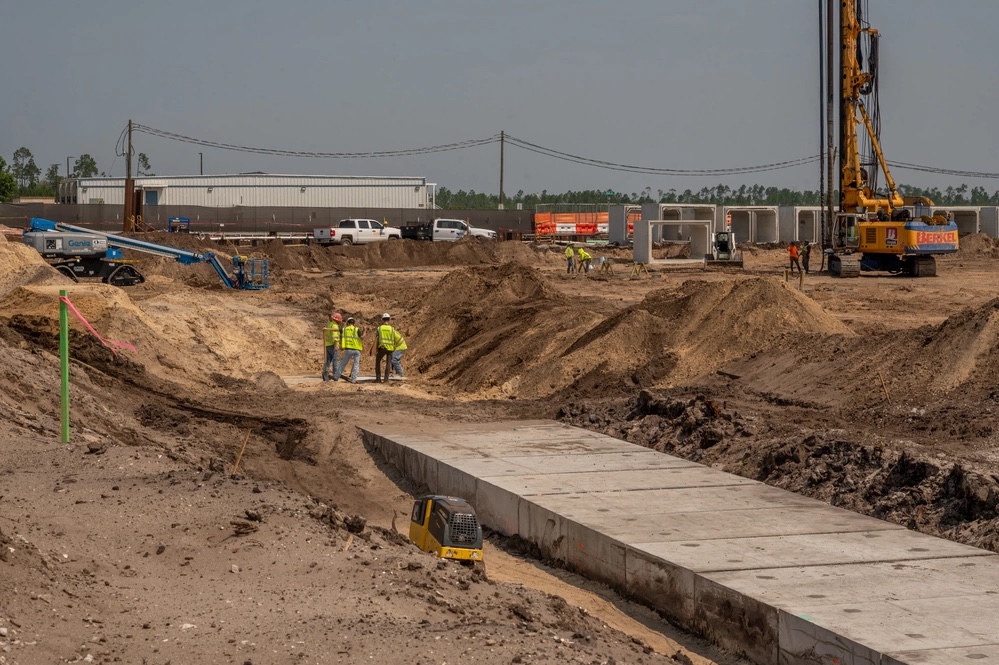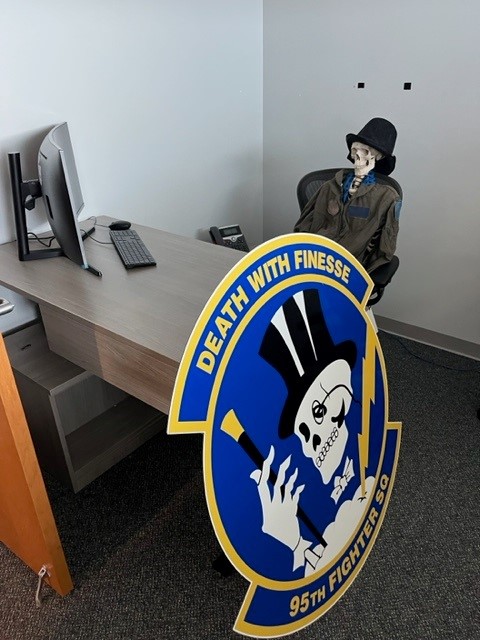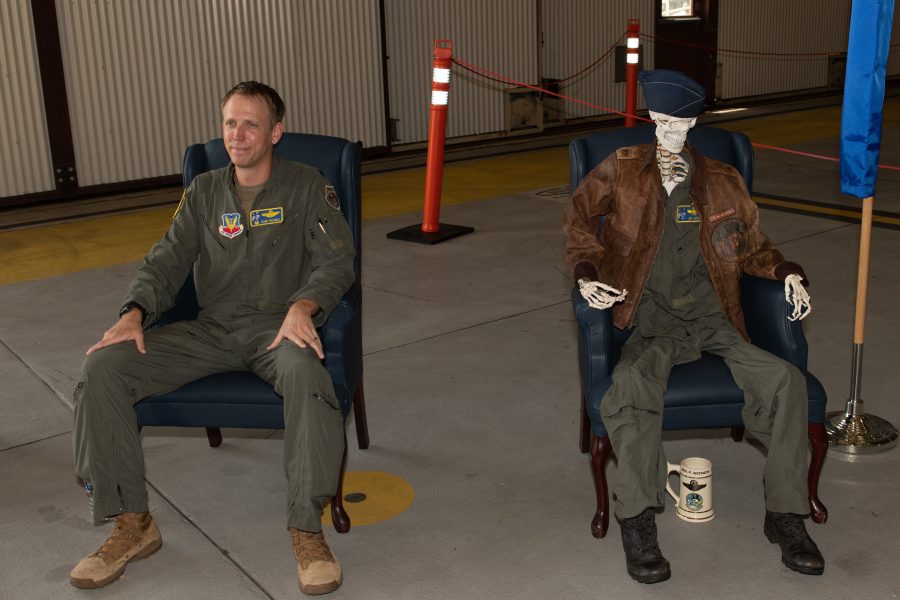An Air Force fighter squadron that first flew in World War II officially returned to duty June 15 at Tyndall Air Force Base, Fla., where the squadron will be the first of three to fly F-35s. Lt. Col. Michael Powell, the commander of the newly-reactivated 95th Fighter Squadron said at his assumption of command ceremony that he plans to have the unit start flying operations in August, take the squadron on a training deployment within a year, and go on a combat deployment within two years.
Though the 95th now officially exists on paper, the squadron—affectionally nicknamed the ‘Boneheads’—is still awaiting its fighter jets and permanent buildings in which to park and maintain them. The F-35s are due to arrive starting in August, while the hangars and other facilities are still being built as Tyndall reinvents itself as an “Installation of the Future” after Hurricane Michael leveled the base in 2018.
It will be largely up to the Boneheads to lay the foundation of F-35 operations at Tyndall before their sister squadrons arrive.
“We’re the first ones, which is going to be extremely challenging, but also extremely rewarding, because we will set the pace, the cadence, the culture,” Powell previously told Air & Space Forces Magazine. “It’s so important for us to set that right.”
Until those buildings are finished, life in the squadron will be on the lean side, with Airmen working out of temporary facilities or sharing older buildings with other units. Powell is eager for the challenge; he is bringing in F-35 pilots with experience standing up squadrons in Alaska and the United Kingdom, old hands from Tyndall’s F-22 days who now fly the F-35, and younger pilots with fresh perspectives.
“That’s what I’m really pumped about, is to build combat capability there,” he said. “Not just the iron or the jets, but building the people, the team, the mission so that we can actually go answer the callings required.”

In World War II, those callings took the 95th Fighter Squadron to the skies above North Africa and Italy, where the unit tallied “more than 400 victories, including 199 air-to-air enemy kills” while flying the P-38 fighter, according to one account.
In the decades after that, the squadron flew a range of jets including the F-86, the F-102, the F-106, the F-15C/D, and most recently the F-22 before the unit was inactivated in 2019. But despite taking on a new aircraft, the 95th will keep its old heritage alive in the form of Mr. Bones, a full-scale, medical school-quality model skeleton who wears a flight jacket and often attends parties, temporary duty travel, or events such as the squadron activation.
There are two versions of Mr. Bones, and the first has been with the squadron since at least its F-15 days. He was buried in 2010 when the squadron was deactivated a separate time, and a new Mr. Bones joined up in 2013 when the squadron was reactivated as an F-22 unit. The second skeleton was also buried in 2019, but Col. Chris Bergtholdt, commander of Tyndall’s 325th Operations Group, exhumed the two skeletons in February to save them from being ground up under construction equipment.
“There was a whole culture around Mr. Bones, kind of this aura and personality around him even though obviously it’s this inanimate object,” Bergtholdt previously told Air & Spaces Forces Magazine. “That whole area is being dug up and all of our new facilities and hangars on the flightline are being constructed at the moment, so we just didn’t want that history to be lost.”

Sure enough, one of the Mr. Bones sat alongside Powell and Bergtholdt as the squadron’s next chapter began at the ceremony last week.
“I have personally witnessed the excitement and buzz with current or past military Airmen and community members these past two weeks, as they have seen the 95th patch and asked, ‘Is Mr. Bones really back?'” Powell said at the ceremony. “Well, as you can see, Mr. Bones is back! [He’s] even sporting a genuine and very historical World War II jacket in the hot and humid month of June. … Must be due to the lack of body fat.”
Powell and Bergtholdt spoke at the ceremony from a lectern decorated with the squadron’s emblem, a grinning skull in a top hat, which was officially approved in 1954.
“Emanating from a cloud, a death’s head with an arrogant expression is symbolic of the squadron’s dauntless capability of accomplishing the mission in any weather, day or night; primarily stalking the enemy to destruction,” wrote Peter Coffman, historian for the 325th Fighter Wing. “The lightning is representative of the unit’s rapid striking power. The full dress, particularly the top hat, represents the squadron personnel’s sentiment that the unit is ‘tops.’”

